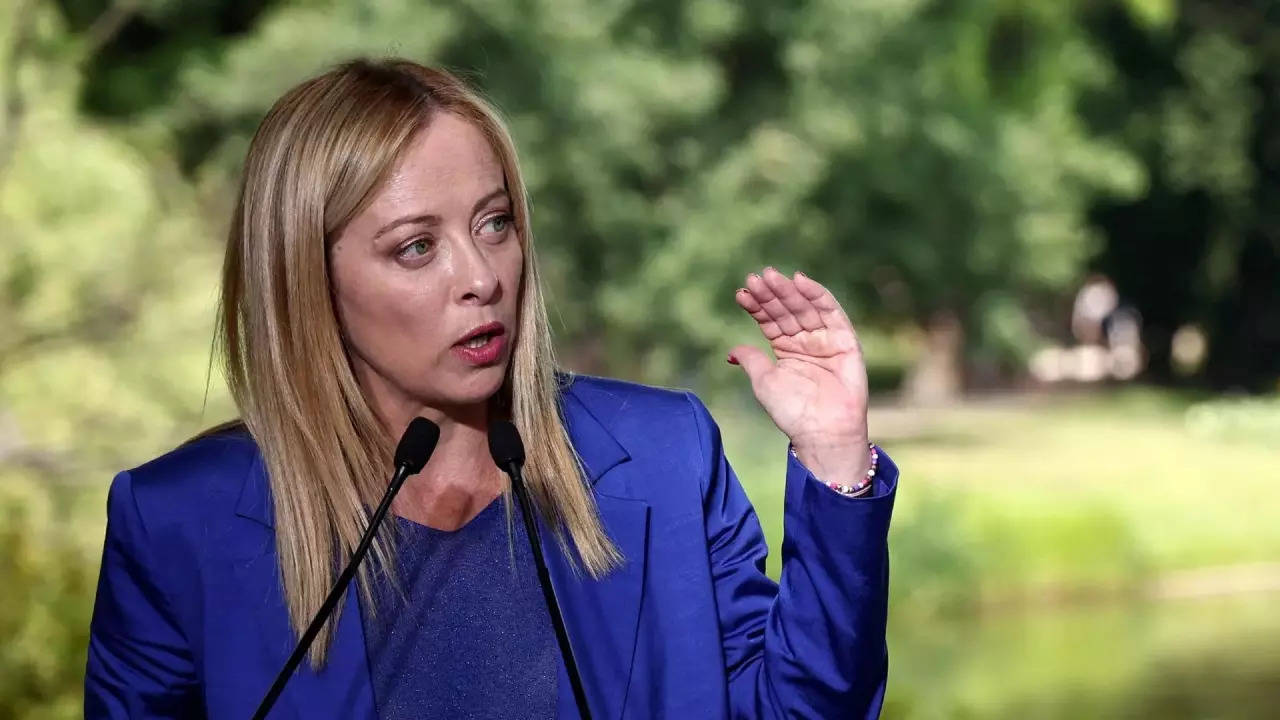Lampedusa, an Italian island nestled in the Mediterranean between Tunisia, Malta, and the larger Sicilian island, is grappling with an unprecedented migrant crisis.
In the span of a week, approximately 7,000 migrants have arrived, surpassing the island’s permanent residents and straining its capacity to provide adequate assistance.
This surge has transformed Lampedusa into a primary entry point for those aspiring to enter the EU, spotlighting the urgent need for comprehensive solutions to address the escalating humanitarian situation.
Lampedusa has a migrant reception centre with an official capacity of only 400. It was housing an estimated 4,000 people on Wednesday.
The influx has occurred despite a European Union-inked accord with the Tunisian government to stem the smuggling operations in exchange for economic assistance.
The influx of arrivals has placed significant pressure on Premier Giorgia Meloni’s right-wing government, which assumed office just last year with a pledge to take a stringent stance on migration.
This challenge comes as preparations for next year’s European Parliament elections are underway, adding to the urgency of finding effective solutions to the migration issue.
Meloni’s conservative coalition partner, the League Party, has increased criticism of Meloni and the EU-Tunisia deal, saying the influx of migrants showed it clearly had failed.
Meloni’s government has restricted the activities of charity rescue boats, impounding their vessels, banning them from conducting multiple rescues and making them travel longer distances to disembark migrants.
Italy has sought to improve ties with Tunisia and in July Tunis and the European Union signed a pact aimed at stemming migrant flows but that has had no immediate impact.
According to Interior Ministry statistics, nearly 126,000 people have arrived in Italy so far by boat this year compared to 66,000 this time last year and 42,000 in 2021.
If the trend continues, this year could be on track to near the record in 2016, when by the end of September some 132,000 migrants had arrived. The year 2016 holds the recent record for migrant sea arrivals with a total of 181,000 people.
In the span of a week, approximately 7,000 migrants have arrived, surpassing the island’s permanent residents and straining its capacity to provide adequate assistance.
This surge has transformed Lampedusa into a primary entry point for those aspiring to enter the EU, spotlighting the urgent need for comprehensive solutions to address the escalating humanitarian situation.
Lampedusa has a migrant reception centre with an official capacity of only 400. It was housing an estimated 4,000 people on Wednesday.
The influx has occurred despite a European Union-inked accord with the Tunisian government to stem the smuggling operations in exchange for economic assistance.
The influx of arrivals has placed significant pressure on Premier Giorgia Meloni’s right-wing government, which assumed office just last year with a pledge to take a stringent stance on migration.
This challenge comes as preparations for next year’s European Parliament elections are underway, adding to the urgency of finding effective solutions to the migration issue.
Meloni’s conservative coalition partner, the League Party, has increased criticism of Meloni and the EU-Tunisia deal, saying the influx of migrants showed it clearly had failed.
Meloni’s government has restricted the activities of charity rescue boats, impounding their vessels, banning them from conducting multiple rescues and making them travel longer distances to disembark migrants.
Italy has sought to improve ties with Tunisia and in July Tunis and the European Union signed a pact aimed at stemming migrant flows but that has had no immediate impact.
According to Interior Ministry statistics, nearly 126,000 people have arrived in Italy so far by boat this year compared to 66,000 this time last year and 42,000 in 2021.
If the trend continues, this year could be on track to near the record in 2016, when by the end of September some 132,000 migrants had arrived. The year 2016 holds the recent record for migrant sea arrivals with a total of 181,000 people.

